Blog

Disproportionate Foreclosure Distribution; Good Reviews for HAMP Mods
As it indicated in its “first look” atrnJune mortgage performance data released last month, Black Knight FinancialrnServices said today that the nation’s foreclosure inventory – those mortgagernloans in process of foreclosure – is disproportionately distributed in statesrnthat use a judicial process, i.e. require a courts approval for a lender torncomplete the repossession of a home. rnThe company’s Mortgage Monitor Report for June takes a closer look atrnthese inventories which, while declining nationally, are 3.5 times as high inrnjudicial as in non-judicial states.</p
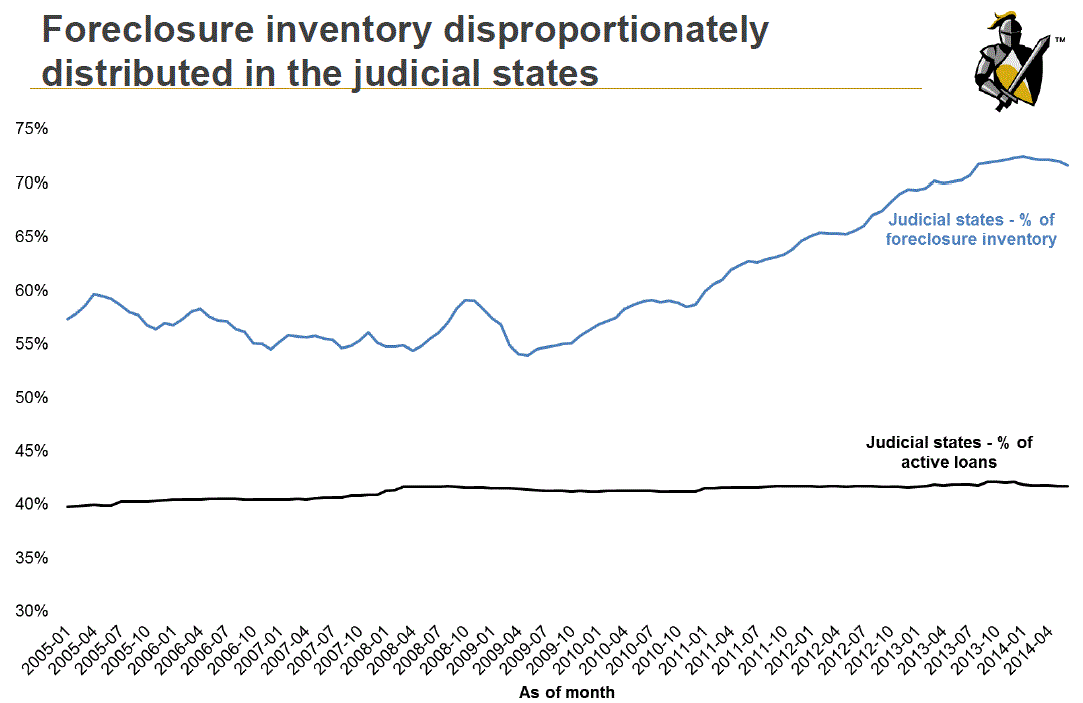 </p
</p
Kostya Gradushy, Black Knight’s manager ofrnResearch and Analytics pointed out that the foreclosure inventory rate hasrndeclined nationally for 26 straight months and it currently at its lowest levelrnsince April 2008. “But this can obscure the stark difference that remainsrnbetween judicial and non-judicial states. rnAlthough judicial states account for about 42 percent of all activernmortgages, some 70 percent of loans in foreclosure are in these states,” hernsaid. “Today, the share of loans in foreclosure inrnjudicial states is 3.23 percent – a significant decline from its January 2012rnhigh of 6.6 percent, but still more than four times higher than the pre-crisisrn’norm.’ Further, more than 60 percent of the foreclosure inventory in judicialrnstates has been past due for two years or more. In fact, these loans have beenrndelinquent an average of 1,084 days, as compared to just 775 days inrnnon-judicial states. The states with the highest number of average days pastrndue for loans in foreclosure are all judicial states: New York and Hawaii arerneach above 1,300 days, while New Jersey and Florida both top 1,200 days.”</p
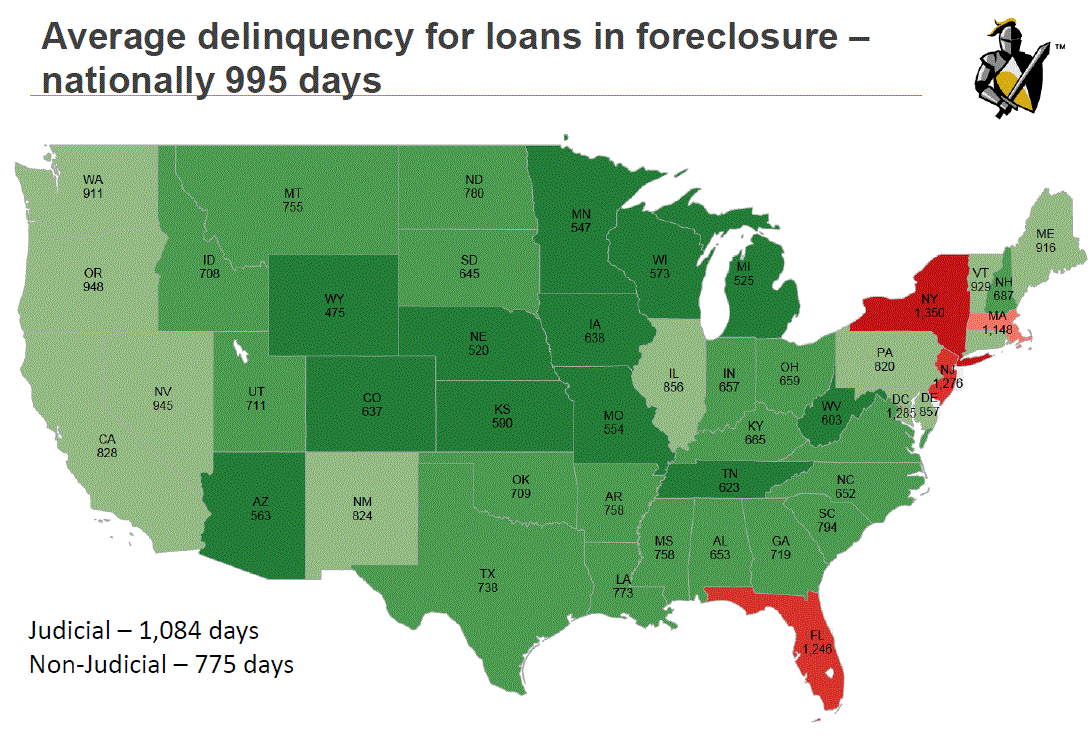 </p
</p
BlackrnKnight also looked at loan modifications and found that overall activity wasrndown to an average of 45,000 modifications per month thus far in 2014. However, Gradushy points out that the sharernof modifications through the Home Affordable Modification Program (HAMP) has increasedrnover the last five months and the joint Housing and Urban Development andrnTreasury Department program accounted for over 60 percent of all modificationsrnin May and 50 percent for the first five months of the year. “The data alsornshowed that all vintages of HAMP modifications are performing significantlyrnbetter in terms of re-default rates than proprietary modifications (thosernnegotiated by the lender outside of HAMP) overall, as well as for modificationsrnwith reduced payments for the borrower. In most cases, proprietaryrnmodifications were almost twice as likely to re-default six months after modificationrnthan HAMP-modified loans,” he said.</p
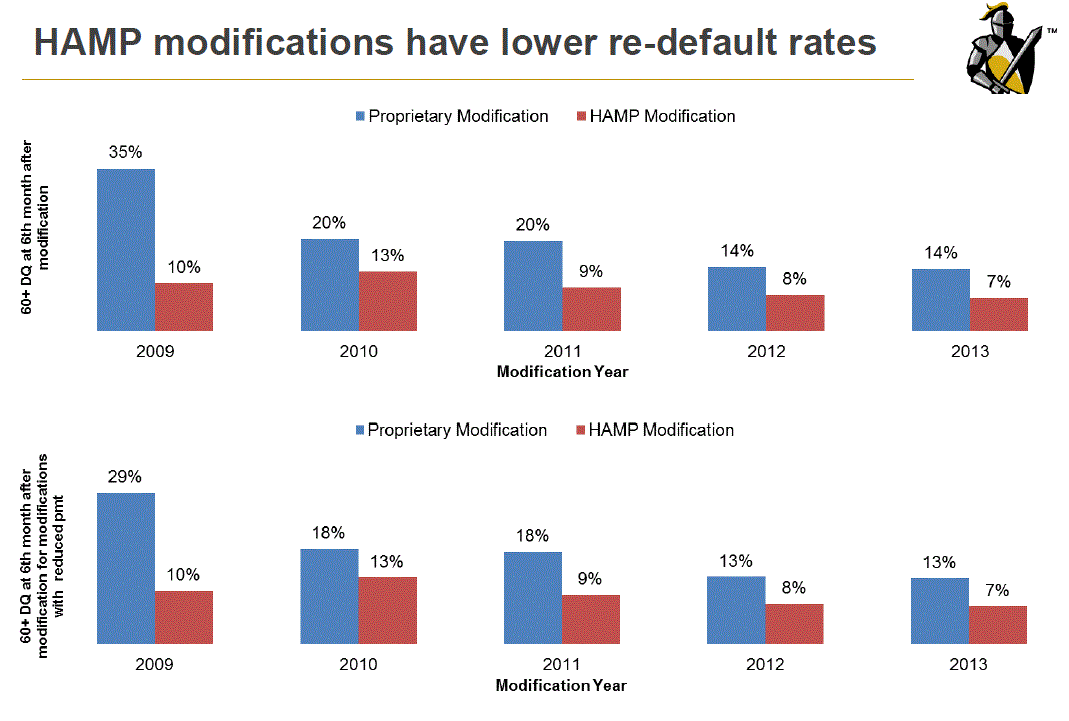 </p
</p
BlackrnKnight also noted that prepayments of mortgages, usually closely tied to refinancingrnactivity, have picked up in the last few months. It notes an increase in prepays among morernrecent vintages of mortgages, those originated between 2009 and 2012. It also said that prepays were highest among mortgagesrnheld by individuals with the highest credit scores and that there wasrnsignificant regional variation with the West and Midwest in the main having morernprepay activity that the Northeast and South.</p
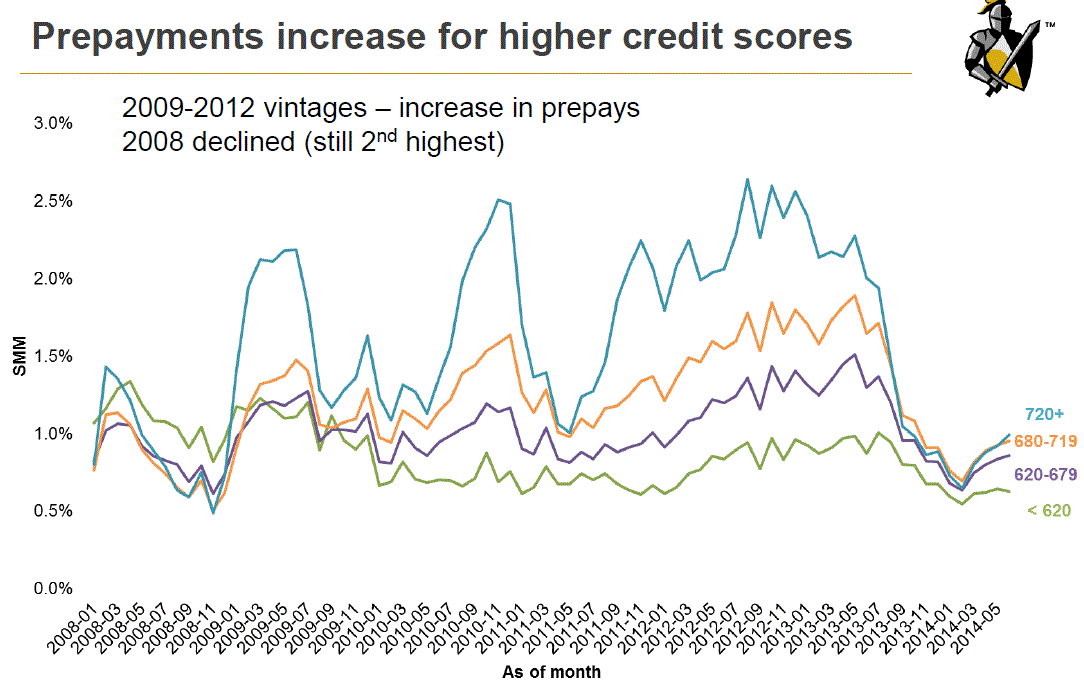 </p
</p
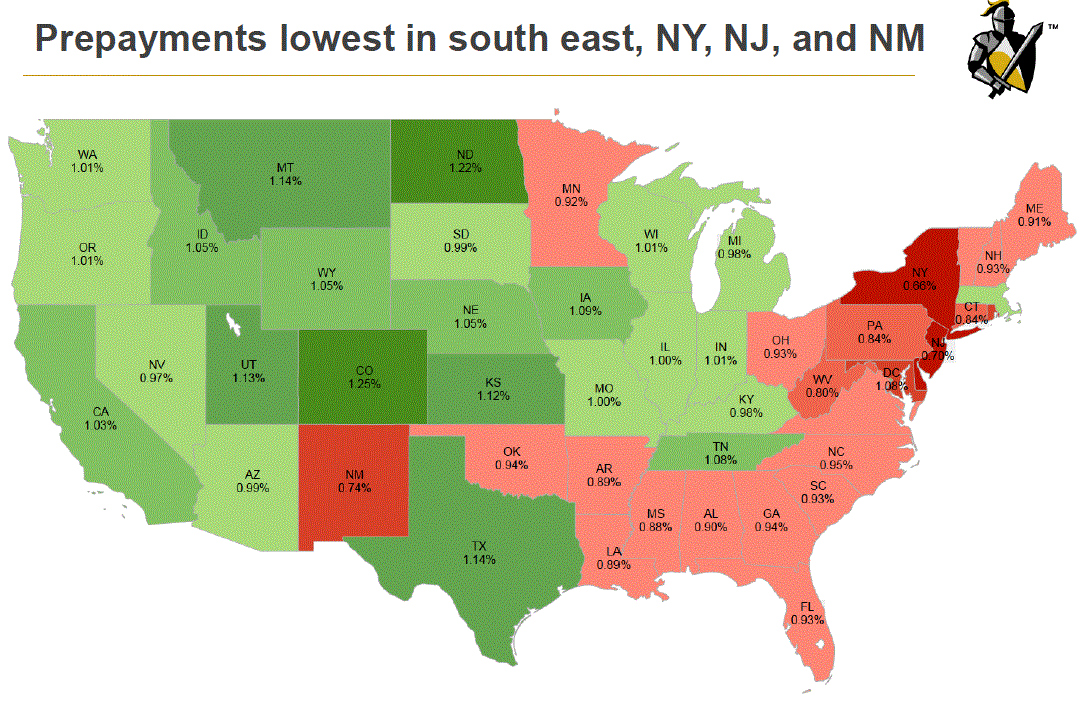 </p
</p
Originationsrnhave also been recovering from the trough they hit in late 2013, butrnrefinancing, with 35 percent of originations, is at its lowest point sincern2008. The government share ofrnoriginations remains over 80 percent.</p
Finally, Black Knight found homernsales volume rebounding as expected due to seasonal effects. Distressed salesrn(REO or short sale) continue to decline overall, while short sales inrnparticular are making up an ever-smaller share of that diminishing volume and sellingrnfor less of a discount than traditional sales. After accounting for nearly 60rnpercent of all distressed sales at the end of 2012, short sales now make uprnfewer than 34 percent of non-traditional transactions. While short salerndiscounts are shrinking, those on REO properties remain stable at around 25rnpercent.</p
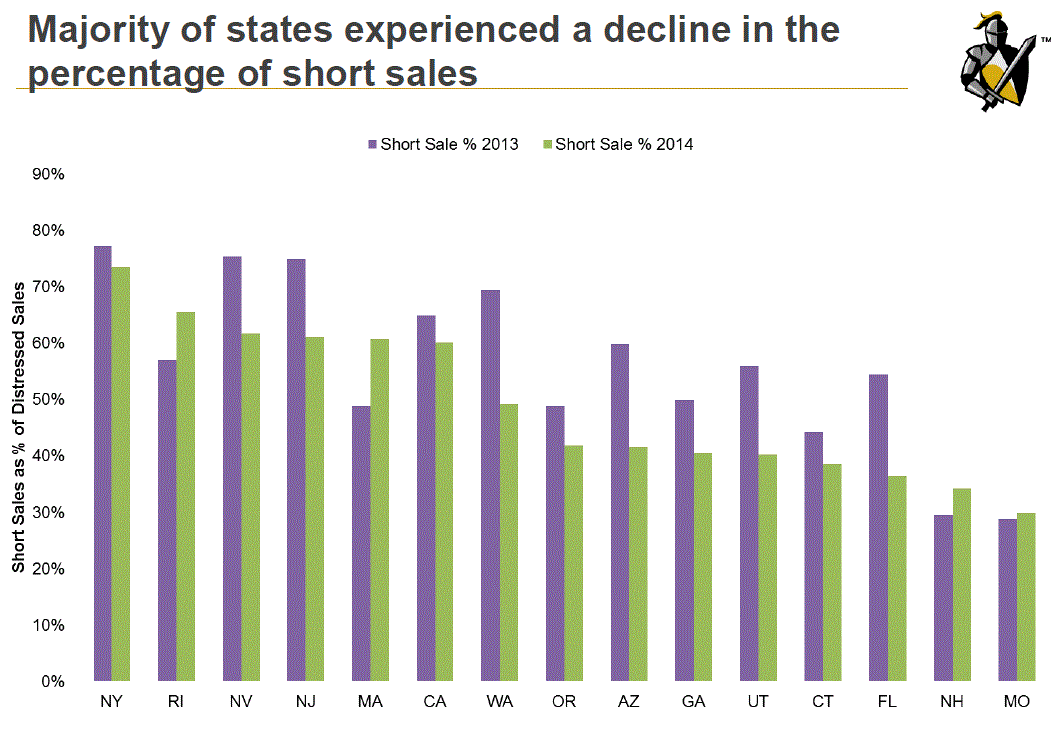
All Content Copyright © 2003 – 2009 Brown House Media, Inc. All Rights Reserved.nReproduction in any form without permission of MortgageNewsDaily.com is prohibited.
Latest Articles
By John Gittelsohn August 24, 2020, 4:00 AM PDT Some of the largest real estate investors are walking away from Read More...
Late-Stage Delinquencies are SurgingAug 21 2020, 11:59AM Like the report from Black Knight earlier today, the second quarter National Delinquency Survey from the Read More...
Published by the Federal Reserve Bank of San FranciscoIt was recently published by the Federal Reserve Bank of San Francisco, which is about as official as you can Read More...

Comments
Leave a Comment